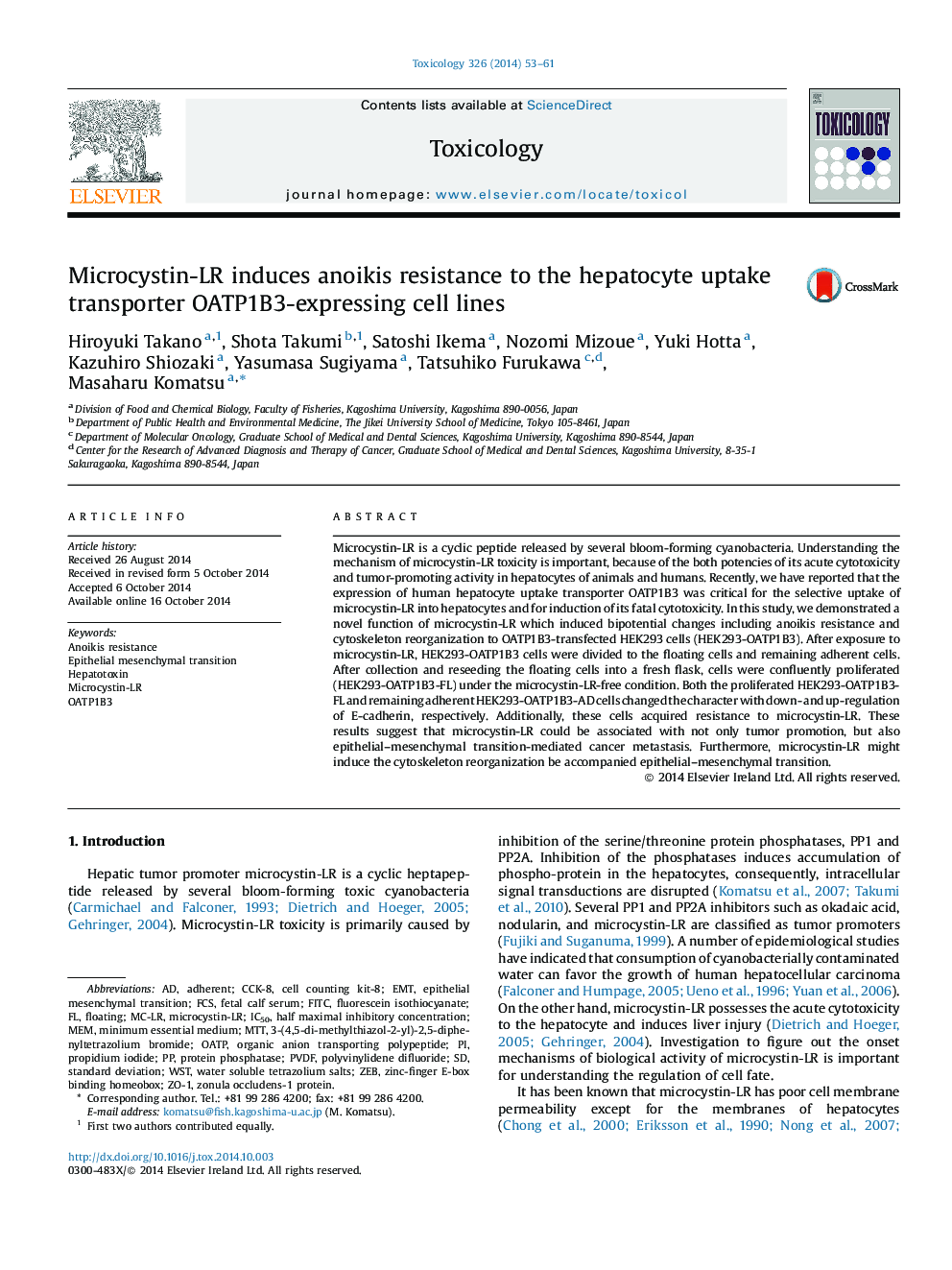| Article ID | Journal | Published Year | Pages | File Type |
|---|---|---|---|---|
| 2595506 | Toxicology | 2014 | 9 Pages |
Microcystin-LR is a cyclic peptide released by several bloom-forming cyanobacteria. Understanding the mechanism of microcystin-LR toxicity is important, because of the both potencies of its acute cytotoxicity and tumor-promoting activity in hepatocytes of animals and humans. Recently, we have reported that the expression of human hepatocyte uptake transporter OATP1B3 was critical for the selective uptake of microcystin-LR into hepatocytes and for induction of its fatal cytotoxicity. In this study, we demonstrated a novel function of microcystin-LR which induced bipotential changes including anoikis resistance and cytoskeleton reorganization to OATP1B3-transfected HEK293 cells (HEK293-OATP1B3). After exposure to microcystin-LR, HEK293-OATP1B3 cells were divided to the floating cells and remaining adherent cells. After collection and reseeding the floating cells into a fresh flask, cells were confluently proliferated (HEK293-OATP1B3-FL) under the microcystin-LR-free condition. Both the proliferated HEK293-OATP1B3-FL and remaining adherent HEK293-OATP1B3-AD cells changed the character with down- and up-regulation of E-cadherin, respectively. Additionally, these cells acquired resistance to microcystin-LR. These results suggest that microcystin-LR could be associated with not only tumor promotion, but also epithelial–mesenchymal transition-mediated cancer metastasis. Furthermore, microcystin-LR might induce the cytoskeleton reorganization be accompanied epithelial–mesenchymal transition.
